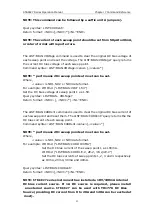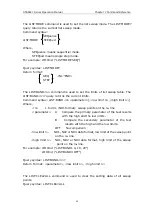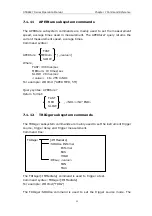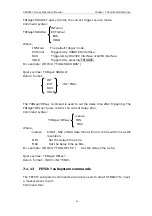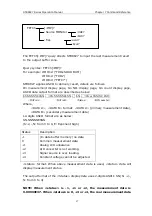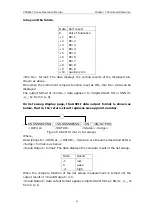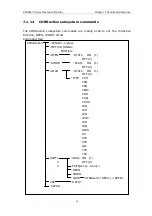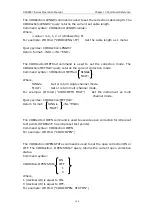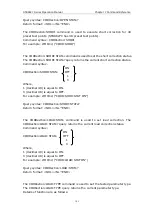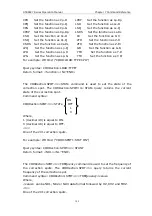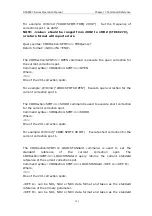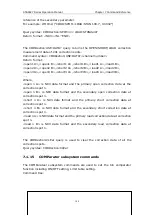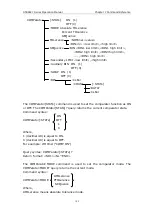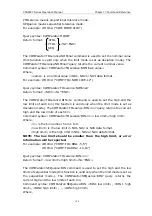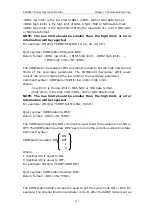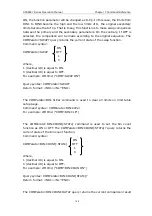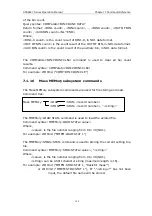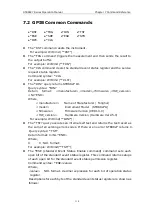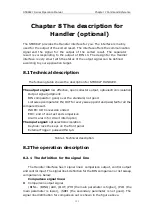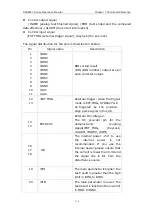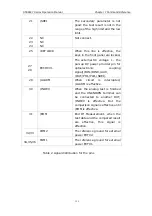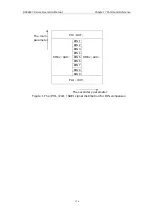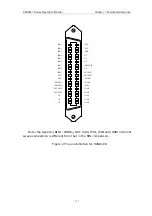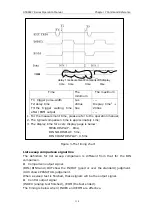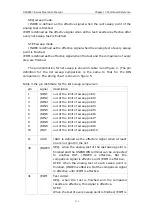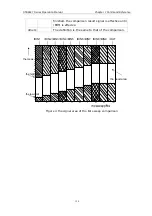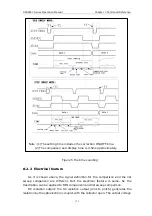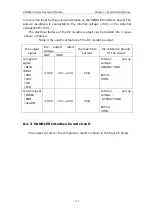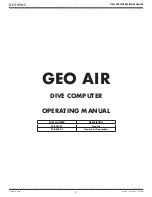
STB8827
Series Operation Manual Chapter 7 Command Reference
<BIN1 low limit> is the low limit of BIN 1 in NR1, NR2 or NR3 data format.
<BIN1 high limit> is the high limit of BIN1 in NR1, NR2 or NR3 data format.
<BINn high limit> is the high limit of BINn (the maximum of n is 9) in NR1, NR2
or NR3 data format.
NOTE: The low limit should be smaller than the high limit, or error
information will be reported.
107
For example: WrtCmd (“COMP:SEQ:BIN 10, 20, 30, 40, 50”)
Query syntax: COMParator:SEQuence:BIN?
Return format: <BIN1 low limit>, <BIN1 high limit>, <BIN2 high limit>, …,
<BINn high limit><NL^END>
The COMParator:Secondary LIMit command is used to set the high and the low
limits of the secondary parameter. The COMParator:Secondary LIMit query
returns the current high and the low limits of the secondary parameter.
Command syntax: COMParator:SLIMit<low limit><high limit>
Where,
<low limit> is the low limit in NR1, NR2 or NR3 data format.
<high limit> is the high limit in NR1, NR2 or NR3 data format.
NOTE: The low limit should be smaller than the high limit, or error
information will be reported.
For example: WrtCmd (“COMP:SLIM 0.001, 0.002”)
Query syntax: COMParator:SLIMit?
Return format: <NR3><NL^END>
The COMParator:Auxiliary BIN command is used to set the auxiliary bin as ON or
OFF. The COMParator:Auxiliary BIN? query returns the current auxiliary bin state.
Command syntax:
ON
COMParator:Auxiliary BIN OFF
1
0
Where,
1 (decimal 49) is equal to ON.
0 (decimal 48) is equal to OFF.
For example: WrtCmd (“COMP:ABIN ON”)
Query syntax: COMParator:Auxiliary BIN?
Return format: <NR1><NL^END>
The COMParator:SWAP command is used to set the swap mode ON or OFF. For
example: the original function parameter is Cp-D, after the SWAP mode is set as

